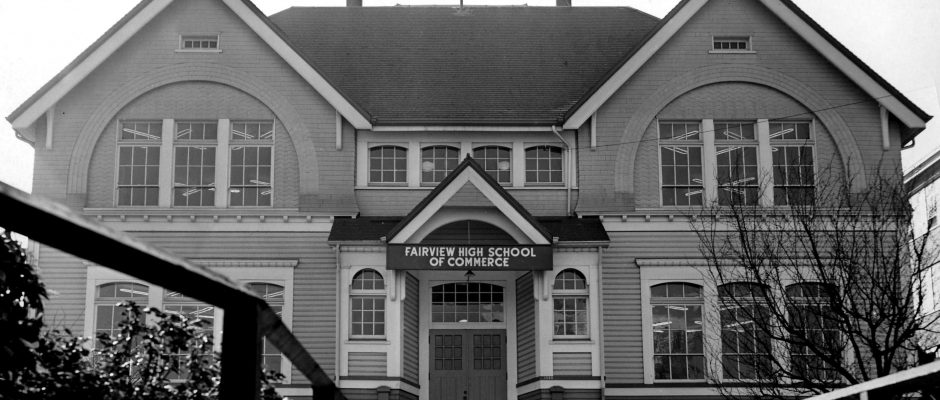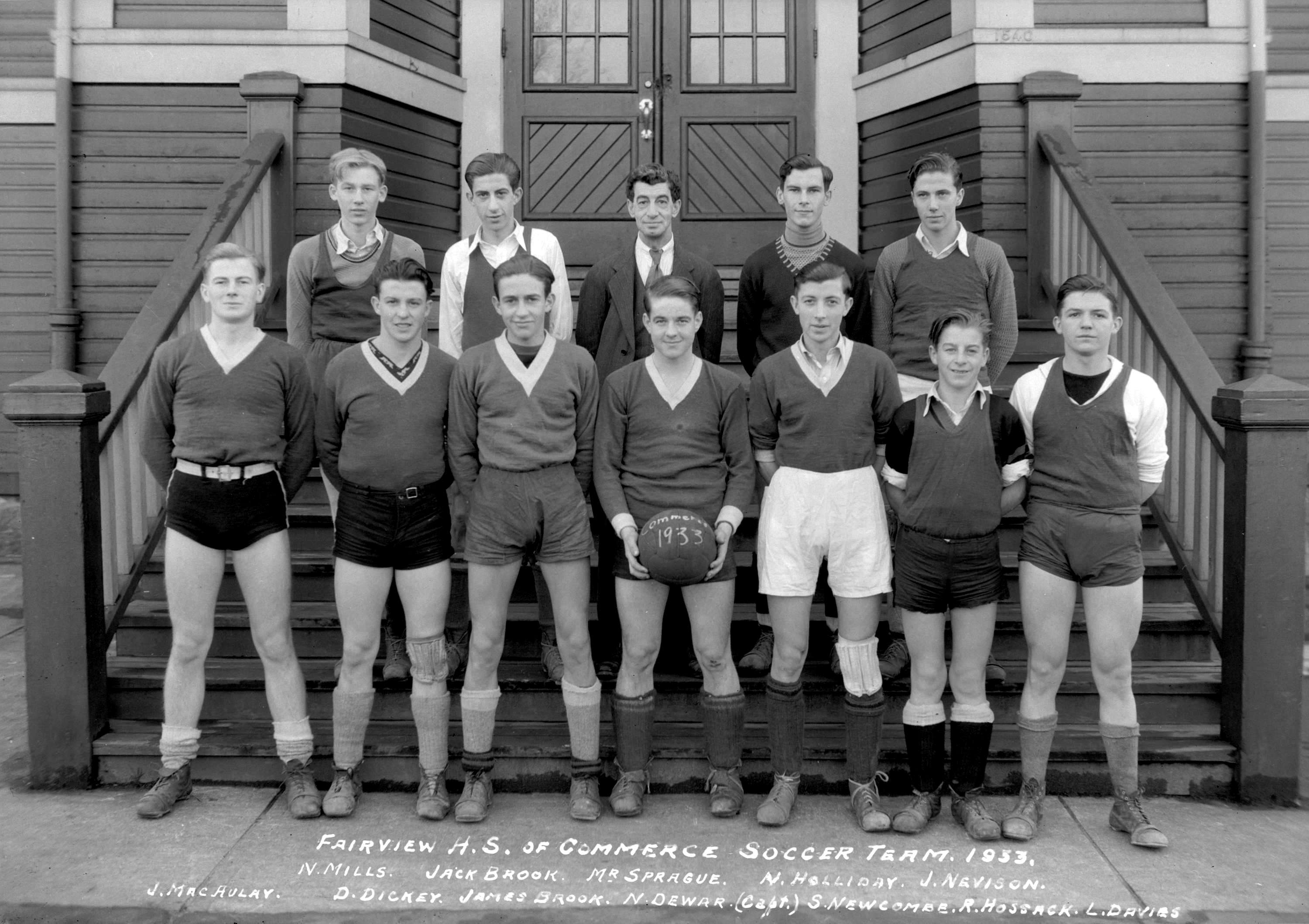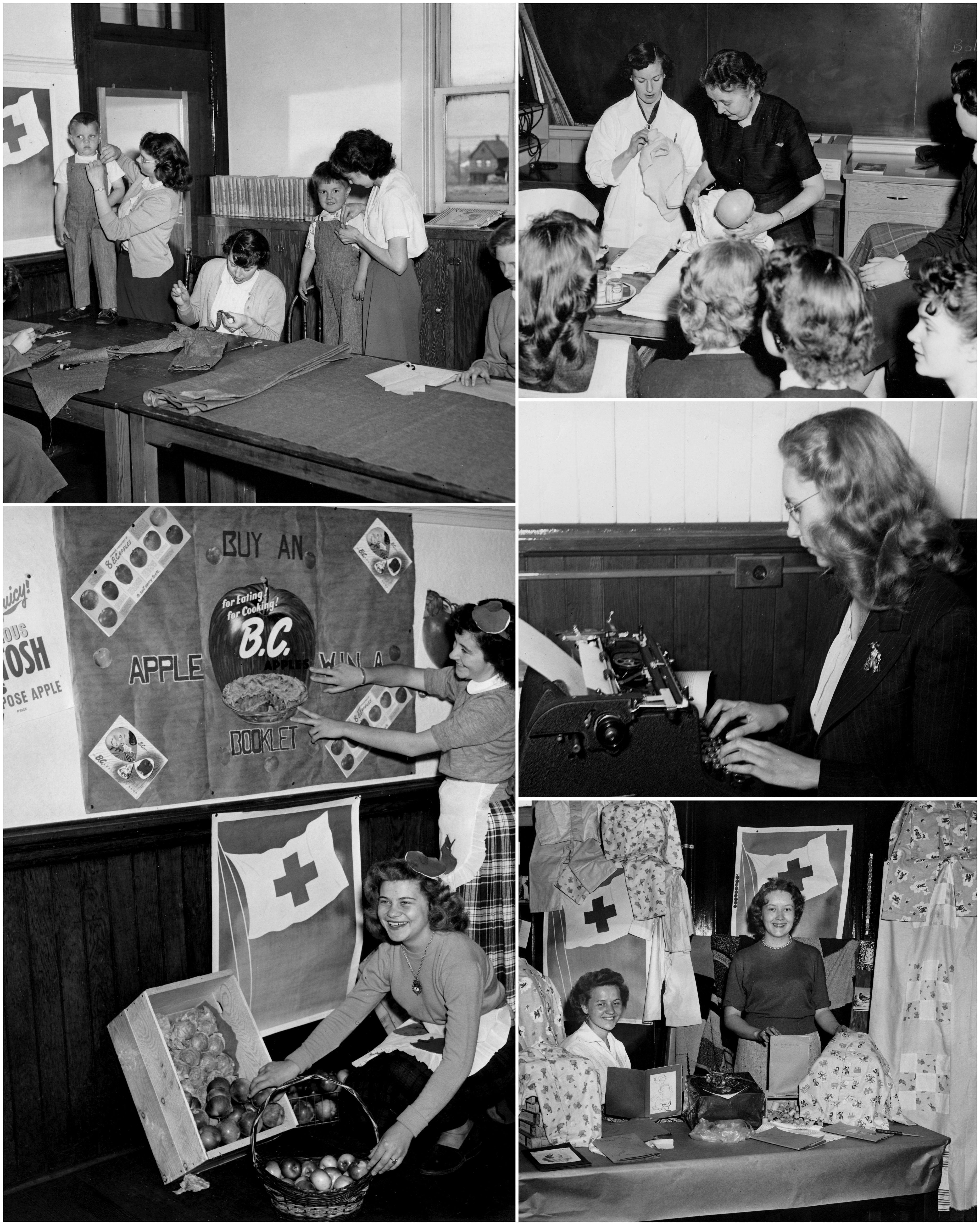Fairview School of Commerce

History of the FAIRVIEW HIGH SCHOOL OF COMMERCE to 1940. Author: Mr. W. K. Beech, M.A. (Queen’s), Principal of the Fairview School.
The Fairview High School of Commerce had its beginning in the King Edward High School during the early years of the century, but did not come into existence as a separate institution until September, 1918.
Prior to 1914, provision was made in the regulations of the Department of Education for the teaching of such subjects as Shorthand, Typewriting and Bookkeeping. A two-year course in each subject was outlined and, to obtain recognition in these subjects, the student was required to pass, in June, the examinations conducted by the Department of Education. Supplementing these purely commercial subjects were such regular high school subjects as English, History, Mathematics, Science, and one or two foreign languages. Even within this limited time, many young men and women, taking this course, were able to equip themselves for office work, and the demand for these commercially-trained young people during these years far exceeded the supply.
In 1914 a change was made in the Commercial Curriculum, and a three-year course was provided as follows: First Year: Reading and Orthoepy; Literature; Composition; Grammar; Algebra; Arithmetic; Typewriting; Shorthand Theory; Spelling; Penmanship; Bookkeeping, and Business Forms. Second Year: Reading and Orthoepy; Literature; Composition; Grammar; Algebra; Arithmetic; Typewriting; Shorthand; Spelling; Penmanship; Bookkeeping; Business Law. Third Year: Literature; Arithmetic; Business Correspondence; Penmanship; Economics and Civics; Typewriting; Shorthand; Business Law; Statute Law; Accounting Theory; Accounting Practice.
In June, 1917, Algebra and Grammar were omitted from the requirements. During these years a Third-year Commercial Certificate permitted the student to enter Normal School to train for Commercial Teaching in a high school. The certificate was also accepted by many American universities as an equivalent to Junior Matriculation.
Top: King Edward High School. Bottom: Cecil Rhodes Elementary School building.
In September, 1918, the commercial classes were removed from the King Edward High School and were given accommodation in the Cecil Rhodes Elementary School building, Fourteenth Avenue and Alder Street. The new school was named the Cecil Rhodes Commercial High School. Its first principal was Mr. Stanley W. Mathews, who, one year later, resigned this position to become Registrar at the University of British Columbia. The first staff of the new school included the following: Mr. S. W. Mathews, principal; Mr. W. K. Beech, Miss C. M. Bridgman, Miss E. M. Munn, Miss Mary Jones, and Miss E.D. MacQueen. The Cecil Rhodes Commercial High School continued to occupy rooms in the Cecil Rhodes School building during the three years until September 1921, and attendance during these years was respectively 196, 214, and 225.
In September, 1921, the school was moved from the Cecil Rhodes building, and was again given rooms in the King Edward building. Here it remained until June, 1935, when, with the exception of the class in Wireless Telegraphy, all classes were removed to the Fairview and Seaview buildings. These two buildings are still occupied, exclusively, by the Fairview High School of Commerce.
Top: Fairview School of Commerce (1918 – 1921; 1935 – 1963) Bottom: Fairview School of Commerce Annex (1935 – 1943)
During the fourteen years, 1921-1935, the attendance by years was as follows: 1921-22, 292; 1922-23, 274; 1923-24; 284; 1924-25, 295; 1925-26, 374; 1926-27, 534; 1927-28, 657; 1928-29, 648; 1929-30, 601; 1930-31, 730; 1931-32, 848; 1932-33, 842; 1933-34, 836; 1934-35, 789.
In September, 1921, the name of the school was changed from the Cecil Rhodes High School of Commerce to the High School of Commerce, and to this name was later prefixed “Fairview”.
During the years 1923-1940, drastic changes have been made in the curriculum. In September, 1923, the Third-year subjects were divided into two sections, known as the Accounting Section and the Secretarial Section. In September, 1928, a course in Junior Business was made available in Grade IX, and in September, 1930, came the introduction of a new programme of studies providing for four years of high school. A Senior Business Diploma was granted to the student earning one hundred and twenty credits, and a Junior Business Diploma to the student earning ninety credits. The whole curriculum was divided into two parts, the one made up of Constants, and the other, Variables. The Constants included such subjects as English, Social Studies, Health, and Physical Education, Junior Business, Bookkeeping, Shorthand and Typewriting. In the Variables, the student might select such subjects as Modern Languages, Mathematics, Geography, etc. In 1932, the present curriculum was introduced.
Fairview relay team. Percy Williams (2nd from the left) went on to win two gold medals at the 1928 Summer Olympics.
During the years 1935-40, the attendance of the school has fluctuated as follows: 1935-36, 840; 1936-37, 827; 1937-38, 904; 1938-39, 868; 1939-40, 761.
A special feature of this school is the Radio Communication Department, which constitutes the Fairview Commerce Annex in the King Edward High School building. The course was begun in the autumn of 1926, under the direction of Mr. W. H. Lambert, with an enrolment of about forty day and thirty night school pupils. This course was designed to meet the requirements of Canadian, British, and International Tele-Communication Systems for certificated officers trained to assume charge of Radio Station operation and maintenance on shore, on aircraft, and on coastwise and deepsea shipping.
Telegraphy Class, 1930
During the past fourteen years, hundreds of young men have taken advantage of these courses offered in both day and evening classes, many of whom are today occupying important positions in this field.
Trained in this Department of Radio Communication, scores of students have answered their country’s call for wireless specialists. Ashore, afloat and in air navigation they are serving with the colors at home and overseas. Many are in the Defence Forces guarding our coasts; numbers are radio officers in the vital British Merchant Service all over the world, and still more are serving in the Air Force. Here they may be found in all ranks, as operator-machine gunners, as wireless instructors, as flight lieutenants, and radio officers on Trans-Atlantic bombers of the Ferry Command. Among the first of these to give their lives for Canada and the Empire were two splendid young Canadians, Flight Lieutenant Allan Simpson, and Flight Lieutenant Gilbert Clay, wireless specialists in the Royal Canadian Air Force. The school is proud of its direct share in the Empire’s fight for freedom.
Photos from the 1950’s
School Gymnasium
Photos from the 1960’s











